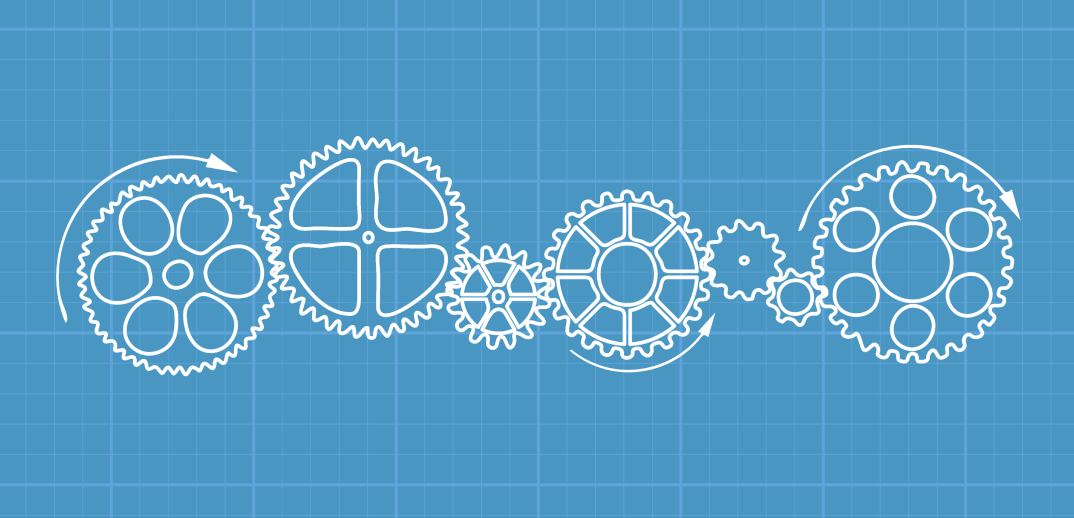Like most large organizations, operations leaders have strived for years to automate and scale their business processes to streamline operations, maximize efficiency, and allow employees to focus on high-value tasks. They have implemented automation technology within and across their many businesses. Yet, the promise of true end-to-end process automation has often eluded them due to the limitations of traditional automation technologies. First, automation solutions lacked the ability to perform cognitive reasoning. Second, moving data between systems was straightforward, but handling a variety of data between systems was always an open challenge.
But adoption of Machine Learning (ML) as part of automation has become more common. As a subset of artificial intelligence that gives computers the ability to learn without explicitly being programmed, the adoption of ML makes this an exciting time for operations leaders who recognize that their automation strategy can expand significantly if driven by a robust ML environment. It enables them to look at any process that requires decision making and transform it into an end-to-end automated process. This “end-to-end” aspect of automating a process represents a sea change in operations.
In the recent article Machine learning, explained, MIT Sloan professor Thomas W. Malone, the founding director of the MIT Center for Collective Intelligence noted, “In just the last five or 10 years, machine learning has become a critical way, arguably the most important way, most parts of AI are done…most of the current advances in AI have involved machine learning.” And it is machine learning that makes end-to-end automation possible for processes that rely on cognitive reasoning.
Consider, for example, organizations’ core processes that rely on the capture, classification, and extraction of information from thousands of documents and other data sources. For them, it makes sense to evaluate ML solutions, including advanced Intelligent Document Processing (IDP) tools. This allows them to work with structured (e.g., loan applications), semi-structured (e.g., articles of incorporation, pay slips), and unstructured (e.g., emails, news article) data.
Here’s an actual in-production, end-to-end process automation deployed within multiple WorkFusion customers’ organizations today using ML (with advanced IDP):
The Process: Financial Instrument Setup Using Term Sheets
Despite having an automation platform in place, the Financial Instrument Setup process remained highly manual, repetitive, and prone to errors at these organizations. Their operations teams had been unable to fully automate the process because their automation platform could only automate 3 steps of the 9-step process. The other steps were performed manually. Those remaining six steps of the process required decisioning skills, exception handling, and four-eye checks – all unaddressed by the automation platforms (see diagram below).

The Ops teams looked to fully automate this process by turning all the manual steps (the middle area) over to WorkFusion’s ML solution with IDP. Today, those ML and IDP responsibilities and capabilities are rolled into end-to-end process automations. As a result, the Ops teams were able to automate all steps (including steps 3–8), with automated handoffs from and to the legacy automation tools at the start and finish of the term sheet-based instrument set-up process. Rather than an existing RPA robot kicking off the process by passing a request to a person, it passes the request to the ML solution with IDP, which then mimics human decision making (see the process flow below).

In Step 3 (labeled OCR), the solution automatically transforms term sheet content into computer-readable text, then applies cognitive intelligence and ML in Step 4 to identify, classify, and extract the necessary information. This happens with near-100% accuracy today and continues to improve via ML on a continuous basis. In Step 5 (Control Process), the built-in workflows leverage human-in-the-loop features to catch any issues during a 4-eye check. Once completed, the validated information is automatically transformed into an output file and handed off to the legacy automation platform’s RPA bot to update the fields in an instrument set-up portal. And voila! – complete process automation.
As this case demonstrates, when ML is combined with other advanced technologies, an organization can transform any process that requires decision making capabilities into a truly end-to-end automated process.
At WorkFusion, that’s the ‘big picture’ kind of thinking that went into the development of our AI Agents. Each Digital Worker is a unique combination of cutting-edge underlying technology, developed through deep partnerships with leading organizations in financial services, insurance, retail, logistics and more. In addition to performing simple RPA tasks, their ML, IDP and additional AI technologies enable them to read and understand virtually any kind of document or data source. Rather than cobble together multiple tools, an Ops team can automate processes from end to end, simply by hiring an AI Agent.
To see how your organization can achieve end-to-end process automation, click here to request a demo.






























